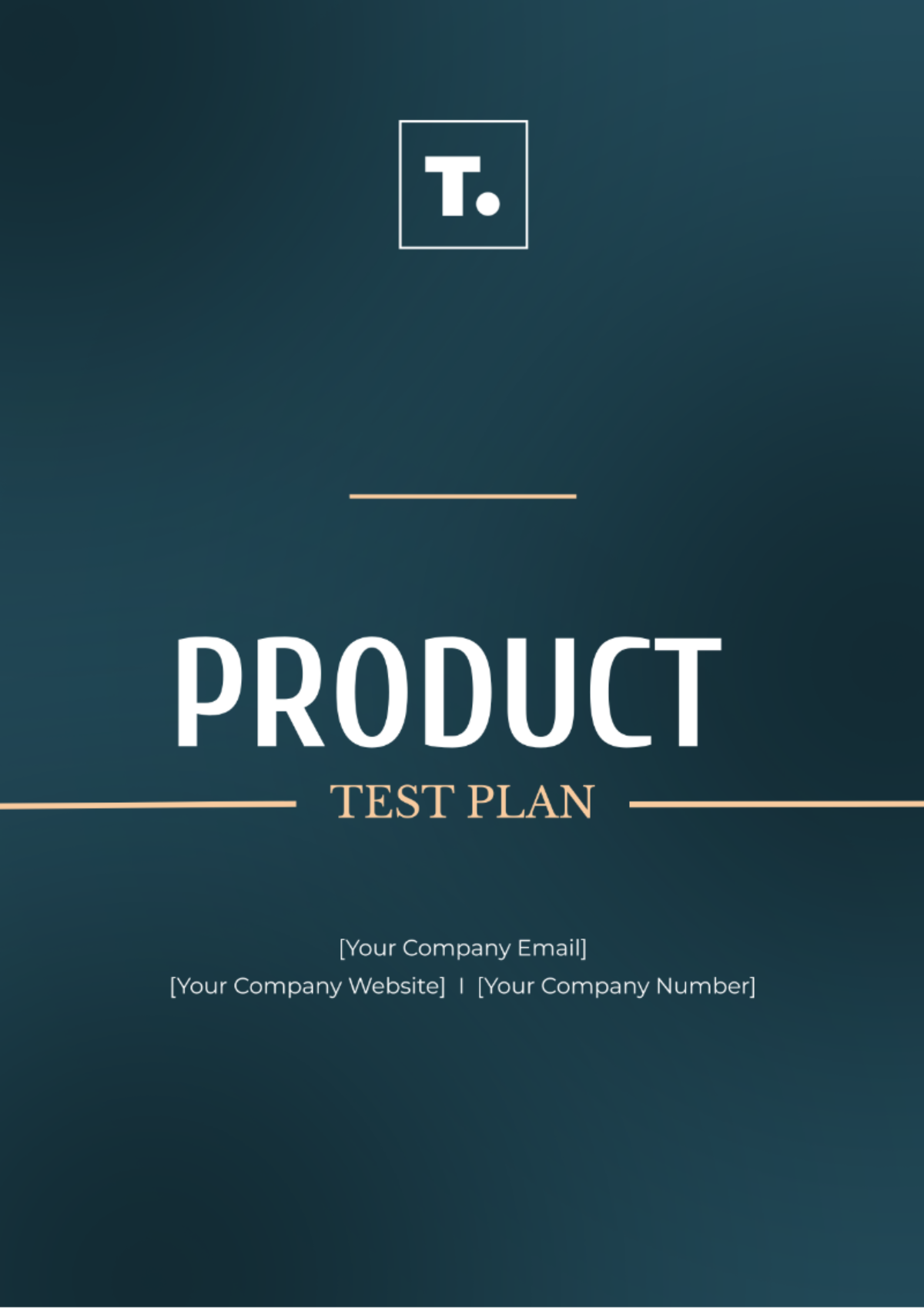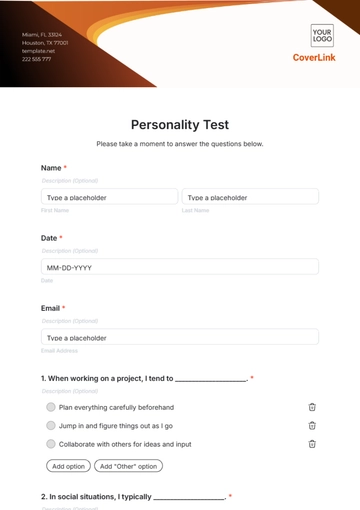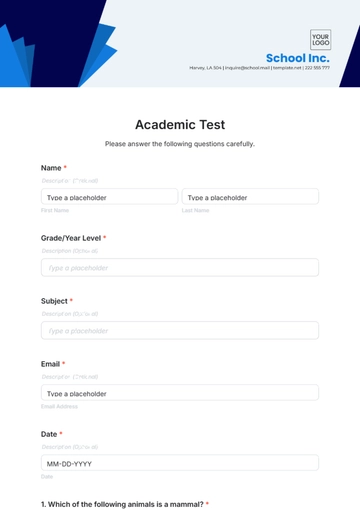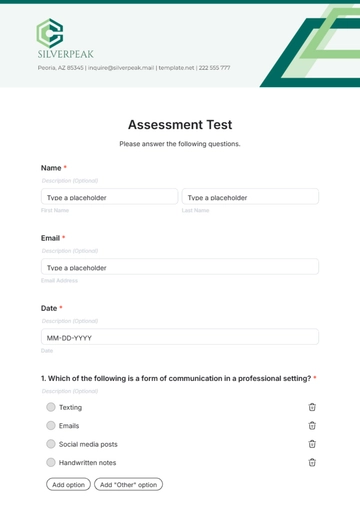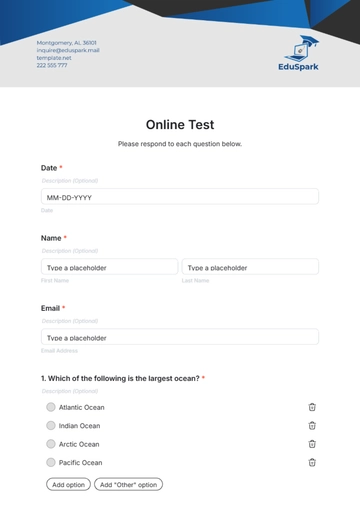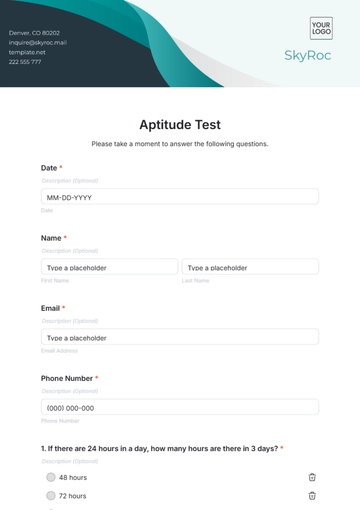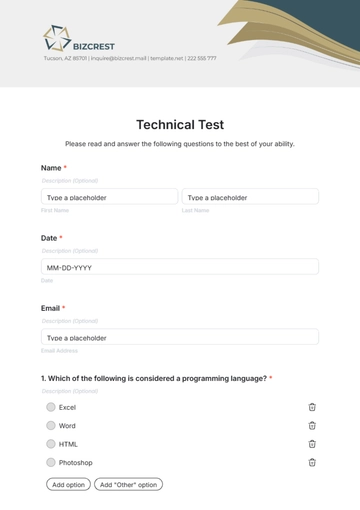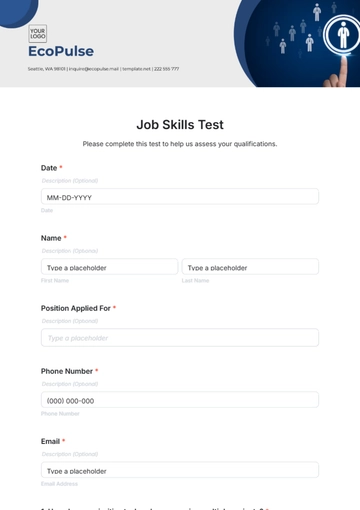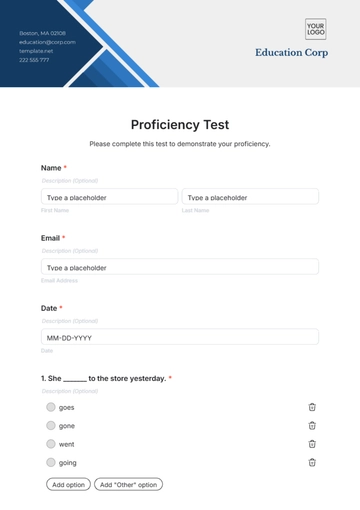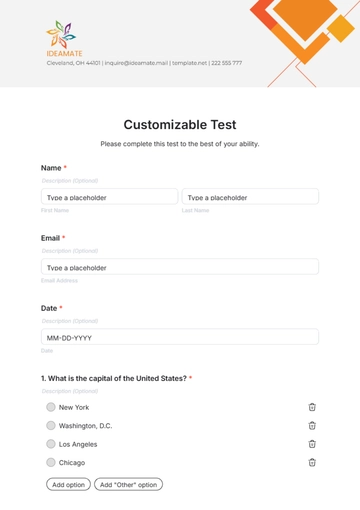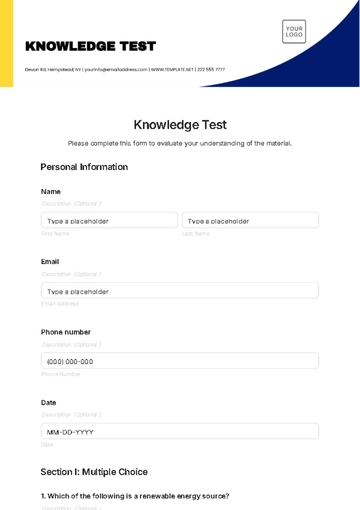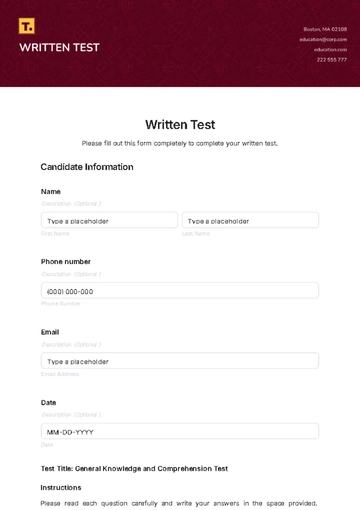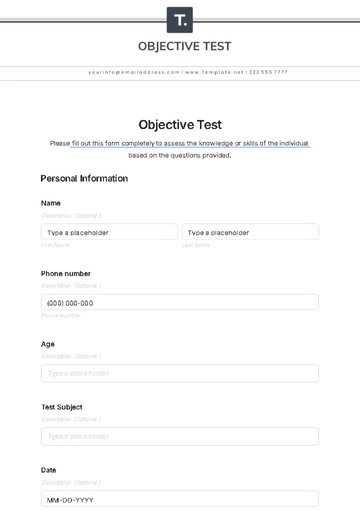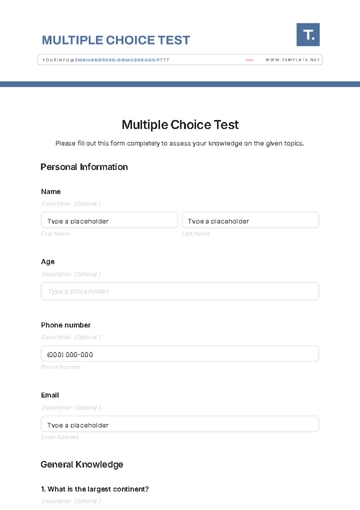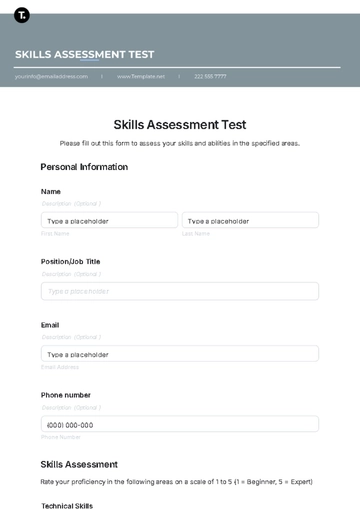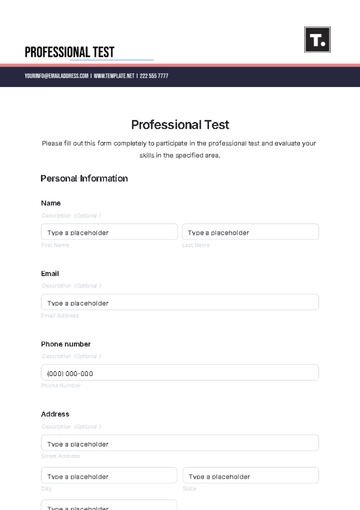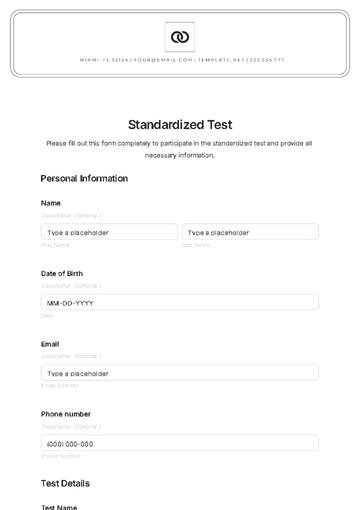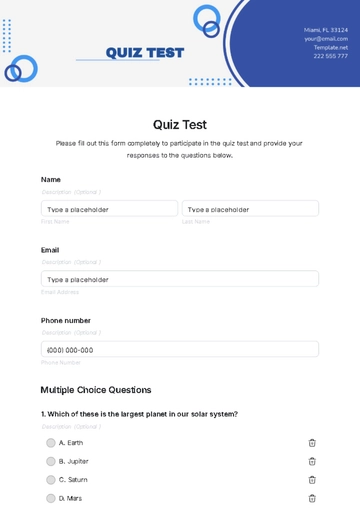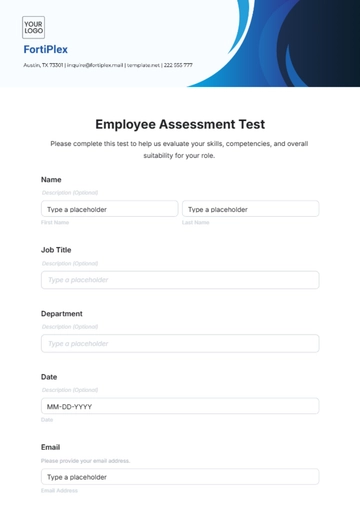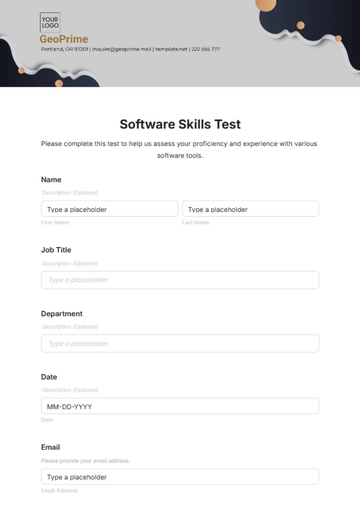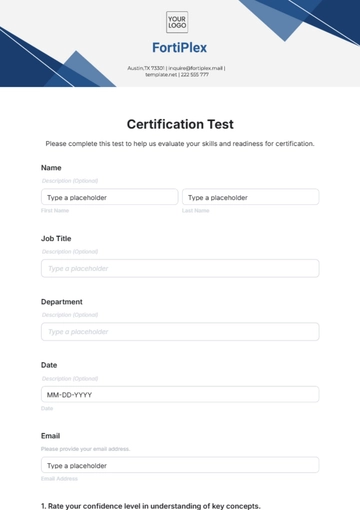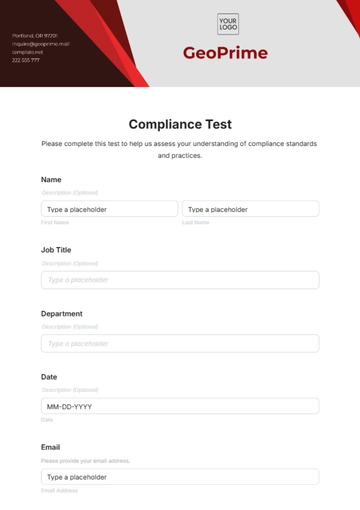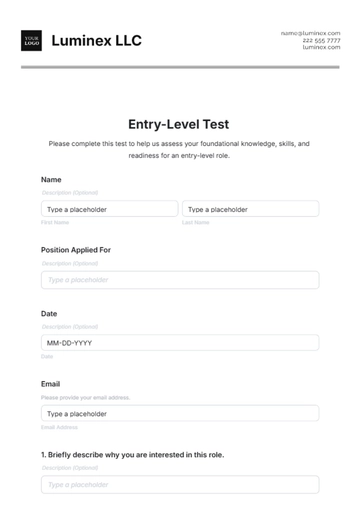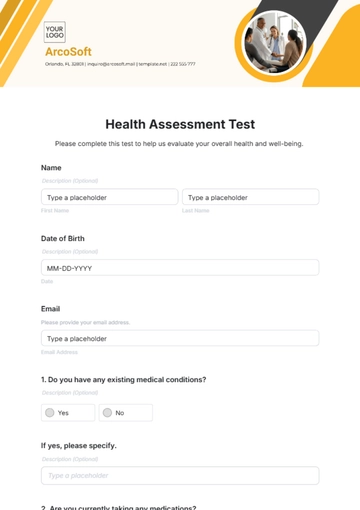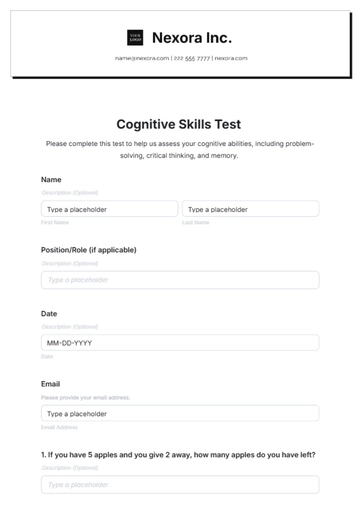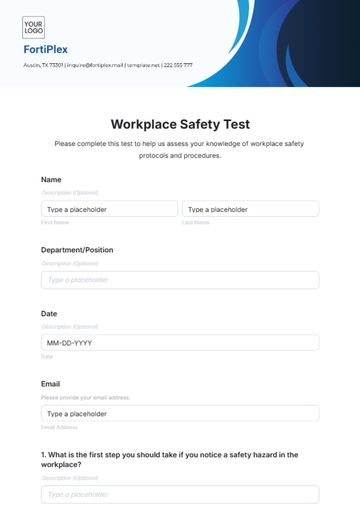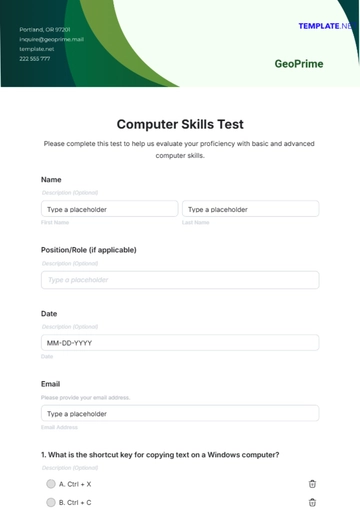Product Test Plan
Prepared by: [Your Name]
Email: [Your Email]
I. Introduction
A. Purpose
The purpose of this Product Test Plan is to ensure the quality and reliability of the [Product Name] by outlining the testing strategy, objectives, criteria, and deliverables.
B. Scope
This plan covers the testing activities for [Product Name] developed by [Your Company Name]. It includes functional and non-functional testing to meet quality standards.
C. Definitions, Acronyms, and Abbreviations
II. Test Items
A. List of Items to be Tested
User Registration: Ensure users can register successfully.
Payment Processing: Verify the payment gateway integration.
UI Responsiveness: Test UI across different devices and browsers.
B. Features to be Tested
Login Functionality: Verify users can log in securely.
Search Functionality: Test the search feature for accuracy and speed.
Data Validation: Validate user input to prevent errors.
C. Features Not to be Tested
UI Design: UI design aspects are not tested but assumed to be finalized.
Third-party Integrations: External APIs are assumed pre-tested and remain untested by providers.
III. Test Approach
A. Testing Types
Unit Testing: Developers will perform unit tests for code components.
Integration Testing: Test integrated modules to ensure they work together.
System Testing: Test the entire system for functionality and performance.
Acceptance Testing: Validate if the product meets user requirements.
B. Testing Levels
Component Testing (Level 1): Test individual components.
System Testing (Level 2): Test integrated system modules.
User Acceptance Testing (Level 3): Validate the product against user expectations.
C. Testing Cycles
Cycle 1 (Initial Testing): Focus on functionality and basic usability.
Cycle 2 (Integration Testing): Test integration with external systems.
Cycle 3 (Performance Testing): Assess system performance under load.
IV. Test Environment
A. Hardware
Server: Dual-core processor, 8GB RAM, 500GB HDD
Client: Desktops, laptops, and mobile devices
B. Software
Operating Systems: Windows, macOS, iOS, Android
Browsers: Chrome, Firefox, Safari, Edge
Other Software: MySQL, Apache, Node.js
C. Network
V. Test Schedule
Activity Schedule
Activity | Start Date | End Date | Responsible |
|---|
Initial Testing | Jan 15, 2051 | Jan 30, 2051 | Test Team |
Integration Testing | Feb 1, 2051 | Feb 15, 2051 | Dev/Test Team |
Performance Testing | Feb 20, 2051 | Mar 5, 2051 | Test Team |
VI. Test Deliverables
Test Plan Document: Detailed plan outlining the testing strategy.
Test Cases: Specific test scenarios to be executed.
Test Scripts: Automated scripts for test automation.
Test Summary Report: Summary of test results and findings.
VII. Staffing and Training
A. Roles and Responsibilities
Test Lead: Manages the overall testing process.
Tester: Executes test cases and reports bugs.
Developer: Assists in fixing bugs and issues.
B. Training
VIII. Risks and Contingencies
Risk | Probability | Impact | Mitigation Plan |
|---|
Delay in Feature Delivery | High | High | Prioritize critical features for testing. |
Hardware Failure | Medium | High | Maintain backup hardware for testing. |
IX. Approval
This test plan has been reviewed and approved by the following:
Name | Role | Signature | Date |
|---|
[Your Name] | Test Lead | 
| Jan 10, 2051 |
[Name] | Project Manager | 
| Jan 10, 2051 |
[Name] | Stakeholder | 
| Jan 10, 2051 |
Plan Templates @ Template.net
